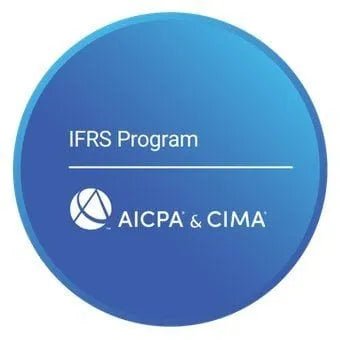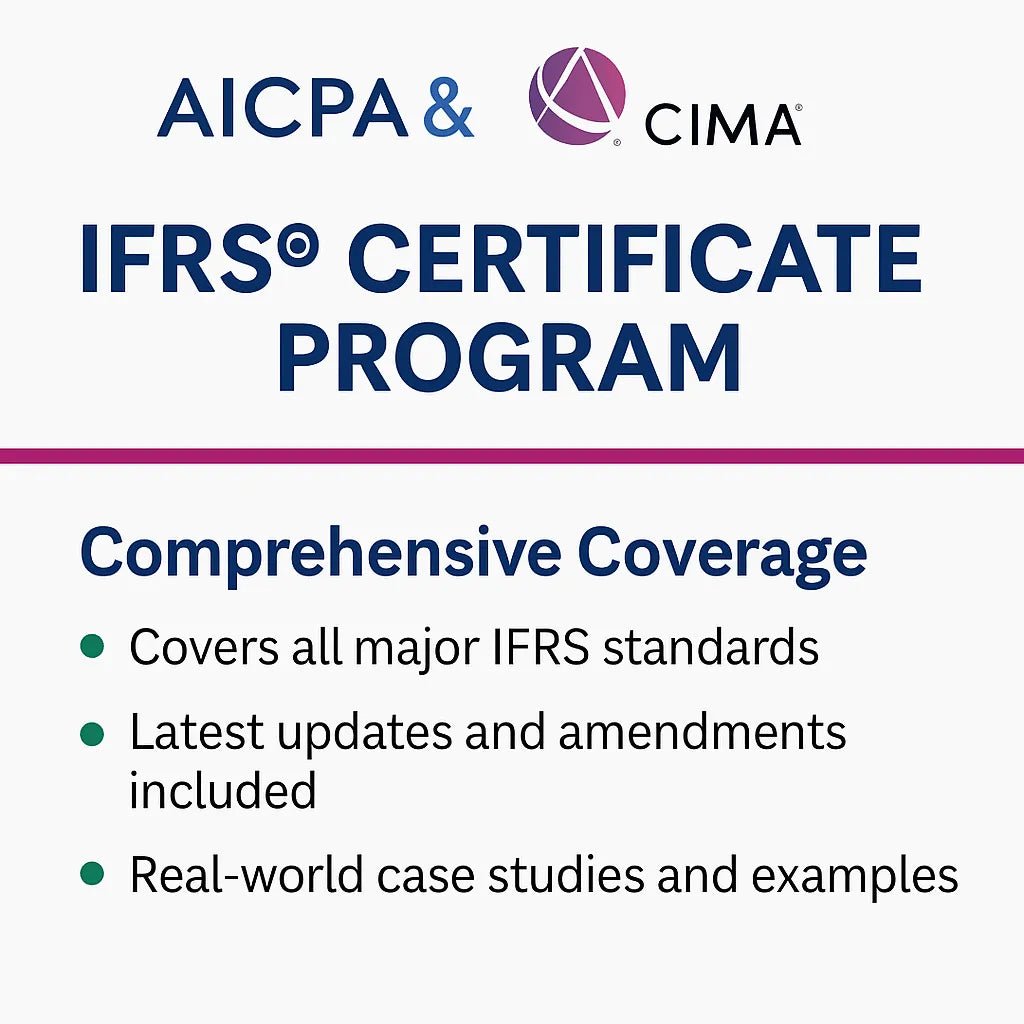IAS 37 Proposed Amendments: Changes to Liability Recognition
IAS 37 Proposed Amendments:
The IASB’s proposed amendments to IAS 37 mark a significant shift in how companies recognize and measure liabilities. These updates, detailed in the 2024 exposure draft, aim to create greater clarity and consistency across financial statements, particularly in recognizing provisions for liabilities.
From adjustments in cost measurement to new discount rate guidelines, these changes are set to impact various industries. In this guide, we’ll explore the key amendments to IAS 37 and what they mean for businesses and financial professionals.
Master IFRS with AICPA Certification—Now 70% Off at Eduyush’s India Pricing
What Is the IASB’s 2024 Draft on IAS 37?
The 2024 IASB draft for IAS 37 proposes updates to how companies recognize and measure provisions. The IASB is targeting three main areas for improvement:
- The Present Obligation Recognition Criterion: Changes the criteria for recognizing liabilities.
- Cost Measurement Requirements: Updates the costs included in provisions.
- Discount Rate Guidelines: Introduces a more standardized approach to discounting.
These adjustments align IAS 37 with the Conceptual Framework for Financial Reporting, creating a global baseline for provision recognition.
Key Changes in Liability Recognition
-
Updated Liability Definition:
- Now aligned with the Conceptual Framework.
- Clarifies what qualifies as a liability, even in complex scenarios.
-
Adjusted Timing for Provisions:
- Companies may now recognize liabilities progressively rather than all at once.
- Previously, costs like levies were recognized only after specific actions.
- This shift offers stakeholders earlier insights into future financial obligations.
-
Enhanced Predictive Value:
- Provides investors with a clearer view of upcoming costs.
Get the ACCA Diploma in IFRS with FREE £89 Registration + Live Lectures!
Adjusted Timing for Recognizing Provisions
One significant impact of this draft is on the timing of liability recognition. Previously, provisions for costs like levies or government-imposed charges were recognized only when specific actions or thresholds were met. Companies may need to recognize these liabilities progressively, offering stakeholders a clearer view of financial obligations over time.
This change aims to improve predictive value for investors by providing early insights into future outflows.
Updated Guidelines on Costs in Measuring Provisions
The IASB’s draft specifies which costs should be included when measuring provisions:
- Direct Costs: Only costs related to fulfilling the obligation should be included.
- Incremental and Allocated Costs: Companies should account for the incremental costs (specific to the obligation) and allocated costs (related to general obligations of that type).
By standardizing which costs to include, the IASB aims to ensure greater consistency in provisions, especially in recognizing costs across similar entities.
New Discount Rate Requirements
- Companies currently use varying discount rates, creating inconsistencies.
- The draft proposes a risk-free rate for discounting provisions.
- This risk-free rate removes non-performance risk from calculations.
- Long-term obligations, like decommissioning costs, are particularly impacted.
- Sectors affected include energy, telecommunications, and mining industries.
- Standardizing rates improves comparability of provisions across companies.
- Reduced subjectivity helps in achieving consistent financial statements.
Withdrawal of IFRIC 6 and IFRIC 21
- The draft proposes to withdraw IFRIC 6 and IFRIC 21.
- Both are replaced with new illustrative examples.
- Examples align better with updated liability recognition criteria.
- They offer practical guidance for industry-specific liabilities, like levies.
- Consolidating guidance in IAS 37 reduces reliance on external interpretations.This change aims to simplify and streamline compliance for companies.
Who the IAS 37 Proposed Amendments Will Impact the Most
The proposed amendments affect all companies applying for IAS 37, especially those facing levies, environmental obligations, and other government-imposed charges. Sectors likely to see the most impact include:
- Energy and Utilities: Due to provisions for decommissioning and environmental restoration.
- Telecommunications and Mining: Often subject to long-term asset rehabilitation obligations.
- Manufacturing and Production: Particularly those subject to levies or waste management obligations.
Entities in these industries may need to adjust their internal processes to comply with new guidelines on timing, measurement, and discounting.
How Will These IAS 37 Proposed Amendments Benefit Stakeholders?
The new draft aims to make financial statements more transparent, comparable, and reliable by:
- Reducing Diversity: A standardized discount rate reduces inconsistencies.
- Improving Predictive Value: Progressive recognizing liabilities gives a clearer picture of future obligations.
- Ensuring Consistency: Clearer definitions and criteria make understanding what qualifies as a liability easier.
These improvements help investors, regulators, and other stakeholders gain better insights into a company’s financial health and obligations.
How to Prepare for IAS 37’s Updated Requirements
For companies and accountants, preparing for these changes will involve:
- Reviewing Current Liabilities: Ensure all liabilities meet the revised present obligation recognition criterion.
- Updating Measurement Processes: Adjust which costs are included in provisions, focusing on directly related costs.
- Revising Discount Rates: Shift to risk-free discount rates to align with the new requirements.
- Consulting Examples in IAS 37: Use the illustrative examples replacing IFRIC 6 and IFRIC 21 as practical guidance for new obligations.
Starting early will allow businesses to make necessary adjustments before the standard’s expected finalization.
Conclusion on IAS 37 Proposed Amendments
The IASB’s 2024 draft introduces essential updates to liability recognition under IAS 37. By clarifying definitions, standardizing discount rates, and updating cost measurement, this draft aims to improve financial transparency and comparability. As these changes unfold, staying informed and prepared will be critical for businesses and finance professionals to ensure a smooth transition.
Stay updated with IASB announcements and consider training in these new provisions standards to remain compliant and competitive
FAQs
ACCA blogs
Follow these links to help you prepare for the ACCA exams
IFRS blogs
Follow these blogs to stay updated on IFRS
Formats
Use these formats for day to day operations
- Account closure format
- Insurance claim letter format
- Transfer certification application format
- Resignation acceptance letter format
- School leaving certificate format
- Letter of experience insurance
- Insurance cancellation letter format
- format for Thank you email after an interview
- application for teaching job
- ACCA PER examples
- Leave application for office
- Marketing manager cover letter
- Nursing job cover letter
- Leave letter to class teacher
- leave letter in hindi for fever
- Leave letter for stomach pain
- Leave application in hindi
- Relieving letter format
Interview questions
Link for blogs for various interview questions with answers
- Strategic interview questions
- Accounts payable interview questions
- IFRS interview questions
- CA Articleship interview questions
- AML and KYC interview questions
- Accounts receivable interview questions
- GST interview questions
- ESG Interview questions
- IFRS 17 interview questions
- Concentric Advisors interview questions
- Questions to ask at the end of an interview
- Business Analyst interview questions
- Interview outfits for women
- Why should we hire you question
leave application format
- Leave application for office
- Leave application for school
- Leave application for sick leave
- Leave application for marriage
- leave application for personal reasons
- Maternity leave application
- Leave application for sister marriage
- Casual leave application
- Leave application for 2 days
- Leave application for urgent work
- Application for sick leave to school
- One day leave application
- Half day leave application
- Leave application for fever
- Privilege leave
- Leave letter to school due to stomach pain
- How to write leave letter
Insurance blogs
- Sample letter of appeal for reconsideration of insurance claims
- How to increase insurance agent productivity
- UAE unemployment insurance
- Insurance cancellation letter
- Insurance claim letter format
- Insured closing letter formats
- ACORD cancellation form
- Provision for insurance claim
- Cricket insurance claim
- Insurance to protect lawsuits for business owners
- Certificate holder insurance
- does homeowners insurance cover mold
- sample letter asking for homeowner right to repair for insurance
- Does homeowners insurance cover roof leaks













Leave a comment